Dear Readers ~
I am working on a new section that will make it easier for you to find guidelines for choosing specific products, which show which products in a category are toxic and which are not. Below is a format I am working on, answering a question I receiving this week about mixing bowls. Please email me with any comments you have, especially if you would like to have more like this, any specific tweaks you’d like, etc. Also what products you’d most like to see in this format so I know where to start. Thanks! 🙂
NOTE: These are not ALL the possible mixing bowls, just a start.
I like this format because I can give you simple summaries that can help you choose products “at-a-glance.” Do you like it?
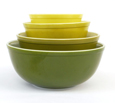 |
Duralex Lys made in France since 1939 |
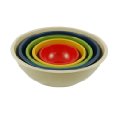 |  Bamboo Composite Mixing Bowls Bamboo Composite Mixing BowlsMade primarily from bamboo fibers, one of the most renewable natural resources on the planet. Nontoxic, durable, sustainable, 100-percent biodegradable and compostable. |
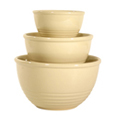 |
|
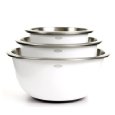 |  Stainless Steel Mixing Bowls Stainless Steel Mixing BowlsCAUTION: Stainless steel cookware and water distillers are known to leach toxic metals into food and water. It is not known what might leach from mixing bowls into food, since no heat is involved and there is little contact time. |
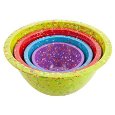 |
Some mixing bowls are available made with recycled melamine, which doesn’t affect toxicity or safety, but a good thing to do for the environment. |
 |  #5 Polypropylene Plastic Mixing Bowls #5 Polypropylene Plastic Mixing Bowls Caution: the safety of polypropylene is uncertain. It has been considered safe, however, one study “accidentally” discovered that two chemicals leaching from their polypropylene lab equipment. Not enough is known about these two chemicals to know what hazard, if any, might occur from exposure through consumer products. If you choose polypropylene mixing bowls, you can get them made from recycled #5 plastic. |
 Silicone Mixing Bowls Silicone Mixing BowlsThere are still unanswered questions about silicone. Though silicone itself is made from silica (sand) other chemicals may be used in silicone formulas to make individual silicones more or less toxic. More research needed. | |
 [If there were a mixing bowl that was so toxic I would say not to even consider it, it would go here with a red down arrow.] [If there were a mixing bowl that was so toxic I would say not to even consider it, it would go here with a red down arrow.] |



